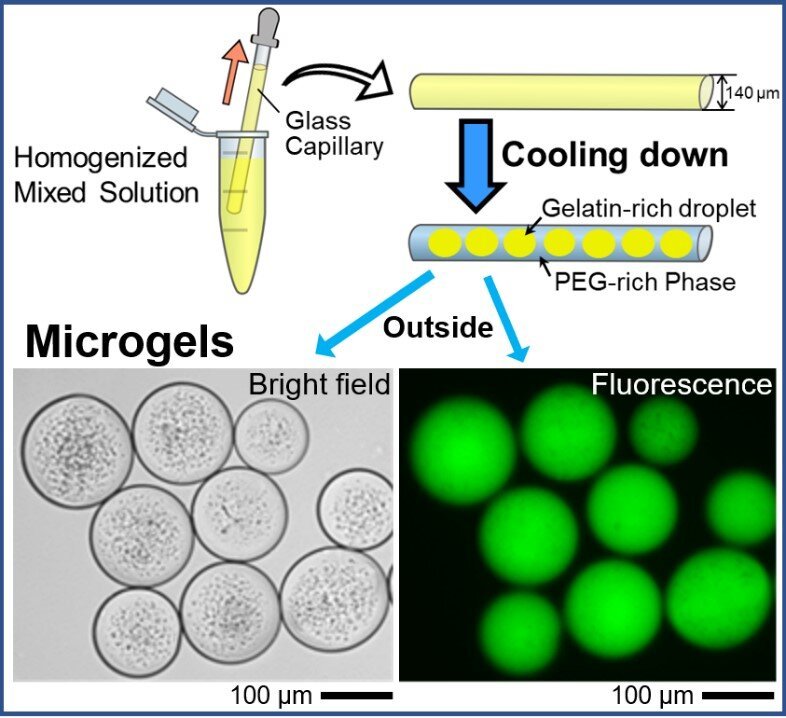Scientists from Doshisha University in Japan have made a significant breakthrough in the field of cellular self-assembly. They have developed a simple and cost-effective one-step method for creating uniform gelatin-based microgels, which mimic living cells. The research team, led by Ms. Mayu Shono and Prof. Akihisa Shioi, published their findings in the journal Small on May 24, 2023.
The motivation behind the study was to understand the self-organization of living matter. By studying microgel formation, the researchers aimed to shed light on the underlying mechanisms of self-assembly. The experimental procedure they discovered has promising implications for generating microgels.
The process of microgel formation involves the initial creation of domain structures using polyethylene glycol (PEG) and gelatin, commonly used synthetic crosslinkers. Lowering the temperature to 24°C facilitates the transition of the gelatin-rich domain into a gel phase.
Under specific experimental conditions, the PEG-rich phase preferentially migrates to the glass surface of a capillary tube due to its higher affinity for glass and lower affinity for the gelatin-rich domains. Consequently, the gelatin-rich droplets become engulfed by the PEG-rich phase. Glass capillary experiments and theoretical modeling studies confirmed that the wettability of the inner glass surface plays a dominant role in the water/oil phase separation.
Furthermore, when DNA is added, the gelatin-rich droplets can spontaneously trap DNA molecules through the phase separation of PEG and gelatin, resulting in the formation of cell-mimicking microgels. The incorporation of negatively charged DNA molecules stabilizes the droplets, preventing their fusion even above the gel transition temperature. Fluorescence microscopy experiments using a labeled dye revealed round microgel structures containing glowing DNA molecules.
The authors of the study anticipate that this innovative method can be extended to other biopolymers, offering uniform and stable cell-sized systems. This development holds great potential in various areas of biological and life sciences, including the confinement, storage, and transportation of large DNA molecules within microdroplets.
Ms. Mayu Shono, the first author and a Ph.D. student, is excited about the future prospects of their research. She believes that this method can be applied to different biopolymers and will have significant implications in the field of biological and life sciences.
In conclusion, the study presents a new approach for producing gelatin-based microgels, which can be customized for various applications depending on the specific needs. Prof. Shioi emphasizes that their method, which doesn’t require special equipment, organic solvents, or surfactants, can be useful for producing microgels for food, medicine, cosmetics, and other materials.
Source: Doshisha University
